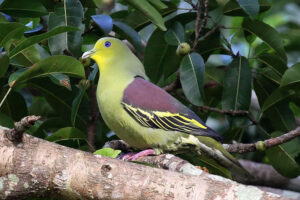The village of Barandi Kovila may be accessed by using the Avissawella-Ginigathhena route alone. It is located at the summit of the mountain, close to the Thalduwa Bridge, and its style is reminiscent of Indian architecture.
History of Barandi Kovila
‘Barandi’ is an uncommon given name. Another name for Shiva is ‘Barandi,’ which means “barandi tree.” Situated in the kingdom of Sithawaka, the Baranadi Kovil is a very significant creation that has been discovered. It is a stunning edifice. Percival, a British explorer, was the one who unearthed it on March 20, 1800. The Barandi Kovila is surrounded by a legend that tells the story of its beginnings.
There are stone works that adorn the remains of the Barandi Kovila, as well as terraces that are built on top of one another. The remains of the Barandi Kovila were constructed on the third and higher terraces. There are some very unusual and stunning stone sculptures to be seen here. Even though the full temple in stone is no longer visible among the ruins, the engravings provide a majestic vision of how it would have seemed in its original form. Perfectly done were the complex themes of leaf and flower designs, as well as the bahirawa faces and expressions. There were two guard stones at one gate that were engraved with what seemed to be full pots, and one corner of the terrace stonework would expose an elephant that had been sculpted.
Seethawaka was assaulted by soldiers from Kotte and Portugal in 1551 CE. They demolished the whole Barandi Kovila and took away priceless items like silver, gold, statues, and other valuables.
There are several legends about the origin of this Kovila. Some believe it was the work of King Rajasinghe I. In 1587, he poisoned his father, King Mayadunne, and then seized control of the country, which he named after him. Following the assassination, his father, King Rajasinghe, was plagued with remorse. He received assistance from Buddhism, but he never had any mental relaxation as a result of his religious practice. Buddhist monks attempted to persuade the King to alter his opinion regularly. The monarch, on the other hand, turned against the Buddhist monks. Then he decided to convert to Hinduism. Aritta Kiwendu Perumal gave him instructions on how to construct a Kovila. The monarch ordered the drowning of 120 monks, who died as a result of his command. That location was near the Kovil, which was on the river.
The Barandi Kovila is a very significant creation that has been discovered. The village of Barandi Kovila may be accessed by using the Avissawella-Ginigathhena route alone. It is located at the summit of the mountain, close to the Thalduwa Bridge. Seethawaka was assaulted by soldiers from Kotte and Portugal in 1551 CE. They demolished the whole Barandi Kovila and took away priceless items like gold, silver, statues, and other valuables. Some believe it was the work of king Rajasinghe I.
Stories About Barandi Kovila
There is another narrative about the Barandi Kovila that needs to be told. According to legend, the Kovil had its origins in the reign of monarch Mayadunne a thousand years ago. That structure was constructed for the Tamils who were transported to the country for fighting during the time. The construction of the Kovil took 20 years, and around 2000 skilled laborers had been hired. Later, King Rajasinghe had the Kovil reconstructed. When compared to King Mayadunne, who reigned for 70 years, King Rajasinghe reigned for just 11 years. As a result, the Kovil could not have been constructed by King Rajasinghe within 20 years after his death. (It took 20 years to complete the construction.) As a result, we may safely presume that King Mayadunne deserves all of the credit.
The Kovil, on the other hand, is a well-constructed structure. According to the architecture, it is closely connected to the ‘Vijayanagar Style’ in India, which is a kind of architecture. The Barandi Kovil has acquired both of these characteristics since it is situated on a relatively high plateau and is surrounded by water.
By looking at the Kovil, it is only reasonable to believe that it was once devoted to Lord Shiva. The most widely accepted version of the myth is that the Kovil was built in honor of the demon goddess Badrakali. Consequently, the name Barandi Kovil might have been formed from the word Badrakali, according to this theory.
The Barandi Kovila was the finest piece of art created during the Seethawaka period.
According to legend, the Barandi Kovil was constructed for the Tamils by King Mayadunne a thousand years ago. According to the architecture, it is closely connected to the ‘Vijayanagar Style’ in India, which is a kind of architecture. The Kovil, on the other hand, is a well constructed structure.
Image Credits: Lanka-excursions-holidays.com
Where to Stay
For those planning a trip to Sabaragamuwa Province [Kegalle & Ratnapura], we recommend booking your accommodations through our partner ” Booking.com,” which allows us to earn a portion of the revenue generated by your booking which enables us to create high-quality content like this. Even if you are unwilling to do so, you can still enjoy the article and learn something you may not have known before.
Booking.com










